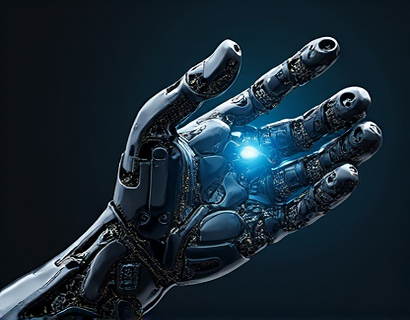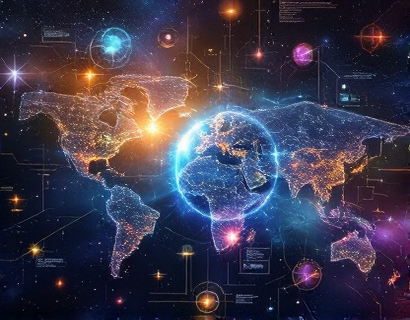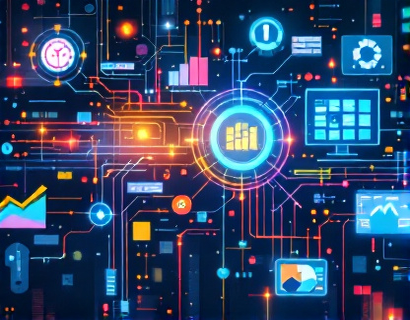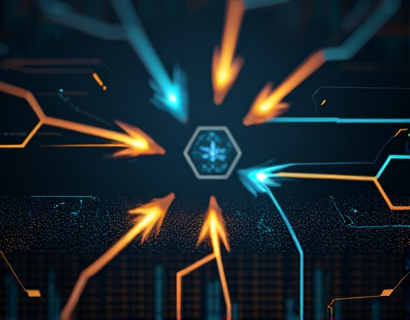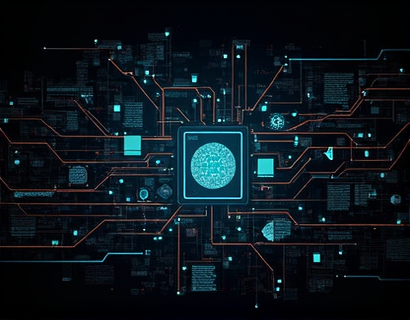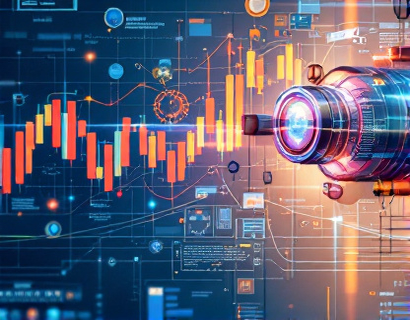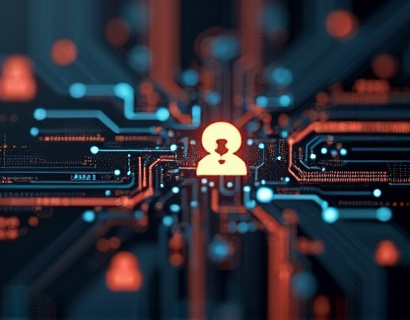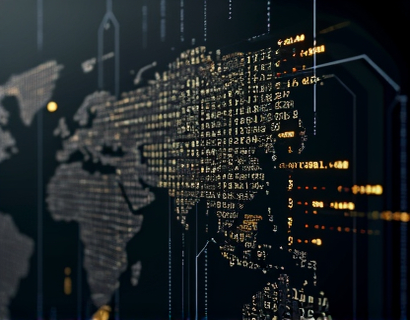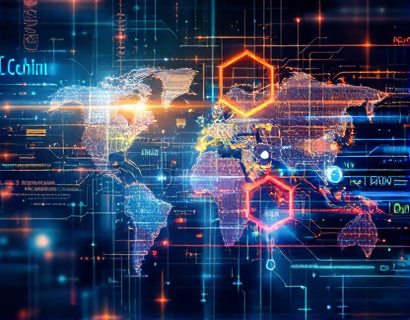Unlocking Digital Transformation: Harnessing AI and Crypto for Enhanced User Experiences
The digital landscape is undergoing a profound transformation, driven by the convergence of artificial intelligence (AI) and cryptocurrency. This synergy is not just a technological curiosity but a powerful force reshaping how we interact online. For tech aficionados and digital pioneers, understanding this convergence is crucial as it opens up new avenues for innovation and enhanced connectivity. This article delves into how AI and crypto are redefining user experiences, creating more seamless and engaging online environments, and exploring the vast potential for future advancements.
The Intersection of AI and Cryptocurrency
At the heart of this digital revolution is the intersection of AI and cryptocurrency. AI, with its ability to process vast amounts of data and learn from patterns, is transforming cryptocurrency from a mere digital currency into a sophisticated ecosystem. Blockchain technology, the backbone of cryptocurrency, provides a decentralized and transparent ledger that AI can leverage to enhance security, efficiency, and user experience.
One of the primary ways AI is impacting cryptocurrency is through smart contracts. These self-executing contracts with the terms directly written into code can automate and enforce agreements without the need for intermediaries. AI can optimize the execution of these contracts, ensuring they are executed under the most favorable conditions, thereby reducing risks and increasing trust in the system.
Enhanced Security Through AI and Crypto
Security is a paramount concern in the digital world, and the combination of AI and cryptocurrency offers robust solutions. AI algorithms can detect and respond to anomalies in real-time, identifying potential security threats before they materialize. For instance, machine learning models can analyze transaction patterns to spot fraudulent activities, ensuring that users' assets remain safe.
Cryptography, inherently secure due to its mathematical foundations, is further strengthened by AI. Advanced encryption techniques, powered by AI, can adapt to new threats dynamically, providing a higher level of security. This synergy ensures that user data and transactions are protected, fostering a more secure digital environment.
Personalized User Experiences
One of the most significant benefits of AI in the cryptocurrency space is the ability to deliver personalized user experiences. AI can analyze user behavior, preferences, and historical data to provide tailored recommendations and services. For example, a crypto wallet powered by AI can suggest optimal times to buy or sell based on market trends and the user's risk profile.
This level of personalization extends to user interfaces and interactions. AI-driven chatbots and virtual assistants can offer real-time support, answering queries and guiding users through complex processes. This not only enhances user satisfaction but also increases the adoption and usage of cryptocurrency-based services.
Decentralized Applications (DApps) and AI
Decentralized Applications (DApps) are a prime example of how AI and cryptocurrency are reshaping digital interactions. DApps leverage blockchain to provide decentralized services, and AI can enhance their functionality. For instance, AI can improve the user interface of DApps, making them more intuitive and user-friendly. It can also optimize the performance of DApps by predicting and managing resource allocation, ensuring smooth and fast operations.
Moreover, AI can enhance the decision-making processes within DApps. By analyzing vast datasets, AI can provide insights that help users make informed decisions, whether it's choosing the best investment opportunities or managing digital assets effectively.
Tokenization and AI
Tokenization, the process of converting assets into tokens on a blockchain, is another area where AI plays a crucial role. AI can analyze market conditions and asset values to determine optimal tokenization strategies. This ensures that tokens are priced fairly and attract more investors. Additionally, AI can manage token distributions, ensuring that they are allocated based on predefined criteria, such as user engagement or contribution to the ecosystem.
Tokenized assets can also benefit from AI-driven analytics. By monitoring token performance and user interactions, AI can provide valuable insights into market trends and user behavior, helping developers and investors make data-driven decisions.
Enhancing Connectivity and Interoperability
The integration of AI and cryptocurrency is not only transforming individual applications but also enhancing overall connectivity and interoperability in the digital ecosystem. Blockchain's decentralized nature, combined with AI's ability to process and integrate diverse data sources, creates a more interconnected and seamless digital environment.
For instance, cross-chain solutions powered by AI can facilitate the transfer of assets and data between different blockchain networks. This interoperability is essential for building a unified digital ecosystem where users can interact seamlessly across various platforms and services.
Case Studies and Real-World Applications
Several projects and platforms are already leveraging the power of AI and cryptocurrency to enhance user experiences. One notable example is a decentralized finance (DeFi) platform that uses AI to optimize lending and borrowing processes. By analyzing user creditworthiness and market conditions, the platform can offer personalized loan terms and interest rates, making financial services more accessible and fair.
Another example is a supply chain management system that uses blockchain to track the movement of goods and AI to predict and prevent disruptions. This system ensures transparency and efficiency, reducing costs and improving customer satisfaction.
Challenges and Considerations
While the potential of AI and cryptocurrency is vast, there are challenges that need to be addressed. One of the primary concerns is regulatory compliance. The decentralized and often anonymous nature of cryptocurrency can pose challenges for regulators, and AI's role in enhancing security and transparency must be balanced with legal requirements.
Another challenge is the technical complexity involved in integrating AI with blockchain systems. Developers need to possess a deep understanding of both technologies to create robust and efficient solutions. Additionally, ensuring user privacy and data protection remains a critical aspect, as AI's data-driven nature can raise concerns about data misuse.
Future Prospects
The future of digital interactions is bright, with AI and cryptocurrency set to play pivotal roles. As technology advances, we can expect even more sophisticated applications of AI in the cryptocurrency space. For instance, the development of AI-powered oracles can provide real-time data to smart contracts, enabling them to make more informed decisions.
Furthermore, the rise of Web 3.0, a decentralized internet powered by blockchain, will benefit immensely from AI integration. This new web will offer a more secure, user-centric, and interconnected digital environment, where AI enhances every aspect of the user experience.
Conclusion
The convergence of AI and cryptocurrency is revolutionizing the digital landscape, offering unprecedented opportunities for enhanced user experiences. By leveraging the strengths of both technologies, we can create more secure, personalized, and interconnected digital environments. As tech enthusiasts and digital pioneers, embracing this transformation is essential for staying ahead in the evolving world of technology. The future is not just promising; it is already unfolding, and the possibilities are endless.





